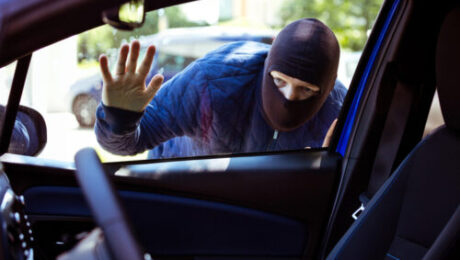U.S. Justice Dept. Offers Guidance for Delayed Reporting Under SEC Cyber Rules
This article is from RISQ Consulting’s Zywave client portal, a resource available to all RISQ Consulting clients. Please contact your Benefits Consultant or Account Executive for more information or for help setting up your own login.

With the Dec. 18 effective date of the U.S. Securities and Exchange Commission’s (SEC) cyber incident reporting rules looming, federal officials have offered guidance on when it may approve delays in the interest of national security.
The SEC cyber rules, adopted this past July, give publicly traded companies four days to disclose the occurrence of a “material” cyber event via regulatory filing. The U.S. Department of Justice and the FBI gave examples of scenarios that may warrant delay.
“The primary inquiry for the Department is whether the public disclosure of a cybersecurity incident threatens public safety or national security, not whether the incident itself poses a substantial risk to public safety and national security,” stated the Justice Department. “While cybersecurity incidents themselves frequently threaten public safety and national security, the disclosure to the public that those incidents have occurred poses threats less often.”
These “limited circumstances” would apply to cases in which a company “reasonably” suspects the event occurred because of a tactic with no known mitigation—for example, an as-yet-unpatched software vulnerability.
Another example given included impacts to events impacting systems containing sensitive government information.
“This category includes systems operated or maintained for the government as well as systems not specifically operated or maintained for the government that contains information the government would view as sensitive, such as that regarding national defense or research and development performed pursuant to government contracts,” said the Department. It also highlighted events involving public companies performing remediation efforts for critical infrastructure or critical systems.
The FBI “strongly” encouraged companies to quickly contact federal officials as soon as they determine an event could threaten national security or public safety.
“This early outreach allows the FBI to familiarize itself with the facts and circumstances of an incident before the company makes a materiality determination,” said the agency. “If the victim of a cyber intrusion engages with the FBI or another U.S. government agency, this engagement doesn’t trigger a determination of materiality. However, it could assist with the FBI’s review if the company determines that a cyber incident is material and seeks a disclosure delay.”
- Published in Blog
2024 General Liability Insurance – Market Outlook
This article is from RISQ Consulting’s Zywave client portal, a resource available to all RISQ Consulting clients. Please contact your Benefits Consultant or Account Executive for more information or for help setting up your own login.

Rising claim frequency and severity have generated hardening conditions across the general liability insurance segment in recent years, prompting ongoing rate increases, stringent underwriting standards and limited capacity. Fortunately, insurance carriers experienced slightly better underwriting results in 2022-23, paving the way for rate moderation. Nonetheless, several concerning trends across the segment—including rising litigation concerns, increasing medical expenses, and heightened risks related to per- and polyfluoroalkyl substances (PFAS)—still have the potential to threaten claim costs and negatively impact overall market performance. As such, policyholders can anticipate another year of modest premium increases in 2024. Additionally, insureds who operate in sectors with elevated liability risks may be vulnerable to larger rate hikes and face difficulties obtaining higher coverage limits.
Developments and Trends to Watch
- Litigation concerns—As social inflation drives up the frequency and severity of insurance claims, businesses face a growing number of lawsuits following liability incidents (actual or alleged) and, in turn, greater penalties from such legal action. One of the main factors influencing social inflation issues in the liability market is the rise in nuclear verdicts (jury awards exceeding $10 million). According to independent public relations firm Marathon Strategies, the five years leading up to the COVID-19 pandemic saw the total sum of nuclear verdicts increase by 178%. Although these awards decreased in 2020 due to pandemic-related court closures, they skyrocketed in the following years; the average nuclear verdict nearly doubled from $21.5 million in 2020 to $41.1 million in 2022. Altogether, litigation shifts and social inflation issues have largely contributed to elevated general liability insurance claim costs, increasing the risk of coverage gaps and out-of-pocket expenses.
- Increased medical expenses—Coverage for medical costs stemming from third-party injuries is a critical component of general liability insurance. Consequently, surging medical expenses have compounded claim costs in the segment throughout the past few decades, with no end in sight. According to the U.S. Bureau of Labor Statistics (BLS), the total value of medical care has jumped by 115.1% since 2000. However, it’s worth noting that inflation among overall goods and services began exceeding medical inflation in 2023, evidenced by monthly consumer and producer price index data from the BLS. This is a rare occurrence, as medical care and health spending generally outpace growth across the rest of the economy. Regardless, surging medical expenses will likely continue playing a role in elevated general liability insurance claim costs going forward.
- PFAS exposures—PFAS consist of a large grouping of chemicals that have been widely manufactured and utilized within different products and packaging across the United States since the 1940s. Over the past few years, PFAS have been the subject of increased regulatory scrutiny stemming from emerging developments regarding the health and safety of these substances. Although some types of PFAS have faced regulatory action in the past, the federal government recently implemented multiple efforts to limit overall PFAS usage and exposure in the coming years and beyond. Apart from federal legislation, 15 states currently have PFAS-related restrictions in place, while New York and New Jersey have already listed these chemicals as hazardous substances in their regulatory regimes. This legislation has contributed to a rise in litigation against businesses that are found responsible for causing PFAS exposure and related ailments via their products and packaging. As regulatory pressures and litigation concerns related to these chemicals press on, businesses that leverage PFAS may experience elevated liability exposures. Further, businesses facing PFAS-related incidents could be more susceptible to coverage exclusions and substantial out-of-pocket losses.
Tips for Insurance Buyers
- Educate yourself on key market changes affecting your rates and how to respond using loss control measures.
- Ensure your establishment has measures in place to reduce the likelihood of customer or visitor injuries.
- Create workplace policies and procedures aimed at minimizing PFAS exposures. Consult legal counsel to ensure compliance with applicable PFAS legislation.
- Examine your general liability coverage with trusted insurance professionals to ensure your policy limits match your insurance needs.
- Published in Blog
The Impact of Secondary Perils on Property Insurance
This article is from RISQ Consulting’s Zywave client portal, a resource available to all RISQ Consulting clients. Please contact your Benefits Consultant or Account Executive for more information or for help setting up your own login.

Secondary perils, such as severe convective storms, floods, wildfires and hailstorms, have significantly impacted the commercial property market. In fact, according to industry data, secondary perils have consistently accounted for over 50% of insured natural disaster losses in recent years.
This article provides more information on secondary perils, including their impact on the property insurance market. It also offers tips on how businesses can mitigate associated risks.
What Are Secondary Perils?
Secondary perils are generally small to mid-sized loss events or secondary effects that follow a primary catastrophe such as an earthquake or a hurricane. According to credit rating agency AM Best, secondary perils account for a larger share of losses from catastrophes compared to primary perils, and it is now the norm that at least one secondary peril event creates losses greater than $10 billion each year.
This is a shift from historical patterns where primary perils represented the highest loss potential. Factors including climate change and population growth in coastal areas and other areas susceptible to catastrophes have led to this shift in the risk landscape.
Evolving Risk Modeling for Secondary Perils
The insurance industry has tried to address the challenges presented by secondary perils. For example, more sophisticated modeling tools are being developed to better understand and manage the risks. However, modeling capabilities are still limited compared to models for primary perils. Additionally, AM Best notes that it will be vital for secondary peril models to be continually recalibrated due to the quickly changing risk landscape.
Pricing Challenges and Capacity Constraints
Pricing challenges arise as secondary peril weather events become more common and severe. Since the technology used to model secondary perils is not as mature as those for primary perils, there is more uncertainty in underwriting them. This can lead to volatility in insurance pricing, making it harder for businesses to account for costs.
Capacity constraints also pose a significant challenge in the property insurance sector, particularly as it relates to secondary perils. These constraints can also lead to market volatility. They may result in insurers limiting coverage or pulling back from high-loss areas, leaving insureds to bear a larger portion of the risk.
Coverage Gaps
Coverage gaps for secondary perils are primarily due to underinsurance and limited availability of coverage. Additionally, property insurance policies may not cover losses caused by secondary perils like floods, leaving businesses to pay out of pocket for resulting expenses. Businesses should engage with insurance brokers and carriers to understand their coverage options and ensure they have adequate protection.
Risk Mitigation
Comprehensive risk assessment is challenging due to a lack of understanding and modeling capabilities. However, to mitigate the risks of secondary perils, businesses can adopt several risk management strategies. One such approach is business continuity planning, which involves identifying potential risks and creating procedures to minimize their impact. Additionally, investing in risk mitigation measures, such as infrastructure improvements or changes in operational practices, can reduce a business’s vulnerability to secondary perils.
Conclusion
While secondary perils present significant challenges, businesses can take proactive steps to understand these risks, ensure adequate insurance coverage and implement strategies to mitigate their impact. Contact us today for more information.
- Published in Blog
Mental Health Minute
This article is from RISQ Consulting’s Zywave client portal, a resource available to all RISQ Consulting clients. Please contact your Benefits Consultant or Account Executive for more information or for help setting up your own login.

Stress and anxiety is bound to creep into your life no matter the mitigation. When it does, you can prepare yourself with simple and quick techniques to sooth the impact and recover quicker.
How Can Grounding Techniques Help Manage Feelings?
Grounding is a practice that can help you manage experiences such as flashbacks, unwanted memories or negative emotions. These techniques involve focusing on the present to distract yourself from anxiety and other challenging emotions.
Physical Grounding Techniques
Physically grounding yourself involves using your senses to help you navigate feelings of distress. A technique to physically ground yourself is to put your hands in water and focus on the temperature of the liquid or switch from cold water to warm water and back while focusing on the present moment.
Other physical grounding exercises include deep breathing, savoring food or drink, picking up nearby objects and moving your body (e.g., walking, running in place or doing jumping jacks).
Mental Grounding Techniques
You can mentally ground yourself with exercises that prevent mental distractions and help redirect your thoughts to the present.
Such exercises include memory games, category-thinking (e.g., listing all the types of cake you can think of), reciting a song or book passage you know by heart, and visualizing a daily task you enjoy.
Soothing Grounding Techniques
Soothing techniques can be used to comfort yourself in times of high anxiety or distress. These techniques are intended to promote good feelings that reduce or distract from negative emotions.
You can practice soothing techniques by picturing the face of someone you love, repeating compassionate phrases about yourself, spending time with your pet, visualizing your favorite place or listing positive things.
Conclusion
Grounding techniques can help you manage unpleasant experiences like distress, anxiety, traumatic nightmares and flashbacks. Try these exercises to reduce distress when you first start to feel negative emotions.
Try These Mood-boosting Activities
Negative emotions and disappointments can easily derail your activities. Although it’s common to be in a bad mood occasionally, letting negative emotions take over your day can leave you feeling worse. Instead of ignoring a bad mood, try a mood-boosting activity.
Free Mood-boosters
- Walking outdoors is a great activity for improving your mood. Spending time outdoors and being in sunlight have both been proven to boost mood. Additionally, walking can release endorphins, which ease stress and discomfort.
- Find ways to laugh, such as watching funny videos, sharing jokes with a friend, going online or watching comedians.
- Try aromatherapy to de-stress. Smells can trigger positive memories and help relieve anxiety or stress. Find your favorite scented soap, smell something that reminds you of a loved one or sample a new essential oil.
- Play cheerful and upbeat music. This can help boost your mood, ease tension, reduce anxiety and even improve certain brain functions, such as memory.
- Do something nice for somebody else, such as a co-worker or friend. Being compassionate to others can make them feel better and may improve your mood as well. Consider small favors, such as doing chores for your housemate or partner, walking a neighbor’s dog or helping a stranger with their groceries.
- Talk to people in your life who uplift you. A short call or time spent with a loved one can help you reduce tension. As a bonus, your loved one may be able to make you laugh, take your mind off your troubles or remind you that you’re not alone.
Conclusion
The next time you’re in a bad mood, try one of these free mood-boosting activities to reduce stress and lessen the impact of negative emotions.
- Published in Blog
Protecting Your Business From Power Surges
This article is from RISQ Consulting’s Zywave client portal, a resource available to all RISQ Consulting clients. Please contact your Benefits Consultant or Account Executive for more information or for help setting up your own login.

Power surges, which are sudden spikes in electrical voltage, can wreak havoc on business equipment and systems. While they may seem like minor inconveniences, power surges can have a significant impact on a business’s bottom line. This article explores the dangers of power surges, effective strategies to shield businesses from their effects and the crucial role of insurance in safeguarding their assets.
What Causes a Power Surge?
A power surge happens when there’s a sudden increase in electrical voltage in a building’s electrical system or the electrical grid. These voltage spikes are caused by different factors, like lightning strikes that discharge massive amounts of electricity into the grid or directly into buildings. Electrical grid fluctuations, such as changes in demand or power line switching, can also cause surges. Internally, power surges can happen when there’s faulty wiring, malfunctioning appliances, or when power-hungry equipment like heating, ventilating and air conditioning systems and large motors start up. These surges can spread throughout the electrical system, potentially damaging connected devices and equipment.
Identifying the various sources of power surges is important to ensure effective surge protection in commercial settings.
The Impact of Power Surges on Business Operations
The impact of power surges on business operations can be substantial and far-reaching. Financially, power surges can lead to extensive costs, including equipment damage or replacement expenses and downtime, resulting in lost productivity and revenue. Beyond the financial implications, surges can inflict reputational damage on a business, eroding customer trust and partnerships due to frequent disruptions and equipment failures. In essence, power surges have the potential to disrupt normal business operations, strain resources and harm a company’s reputation, making them a critical concern for businesses of all sizes and industries.
Strategies to Protect Against Power Surges
To protect against power surges, businesses can utilize the following effective strategies and tools:
- Surge protection devices (SPDs)—These devices should be installed at critical points in the electrical system to divert excess voltage away from sensitive equipment and prevent damage. It’s advisable to install SPDs throughout different areas of a building. The three primary zones for protection are service entrance SPDs, distribution panel SPDs and point-of-use SPDs. Service entrance SPDs prevent surges from entering the building, while distribution panel SPDs limit the spread of surges to downstream areas. Point-of-use SPDs offer targeted protection for specific assets.
SPD installation should comply with the manufacturer’s recommendations. SPDs need to be properly sized and grounded to protect equipment.
- Uninterruptible power supply (UPS)—A UPS is a type of device that powers equipment nearly instantaneously in the event of grid power failure, protecting the equipment from damage. Implementing a UPS can provide a temporary power source during surges or outages, allowing for safe equipment shutdown.
- Grounding and bonding—Proper grounding and bonding of the electrical system can reduce the risk of surges caused by electrical faults.
- Regular electrical maintenance—Regular inspections and maintenance can help identify and address potential issues before they lead to surges.
- Employee training and awareness—Educating employees about power surge risks and establishing protocols for immediate response can minimize damage and downtime in the event of a surge.
By adopting these strategies and tools, businesses can significantly enhance their protection against power surges and avoid potential financial and operational disruptions.
The Role of Commercial Property Insurance
Even though preventive measures are essential, power surges can occur unexpectedly, and accidents can happen. However, there is good news for businesses. Commercial property insurance policies and appropriate endorsements can help cover the financial losses that result from power surges. Here are some of the benefits of such coverage:
- Equipment replacement coverage—Insurance can cover the cost of repairing or replacing damaged equipment.
- Business interruption coverage—If power surges cause downtime, insurance may compensate a business for lost income during that period.
- Spoiled inventory coverage—Insurance may cover the cost of spoiled inventory that results from power outages.
Conclusion
To ensure smooth operations, businesses should take proactive measures to protect against power surges. This can be achieved by implementing surge protection strategies and acquiring the appropriate insurance. By doing so, businesses can safeguard their assets and maintain productivity even when faced with power surges.
Contact us today for additional guidance on commercial property risks.
- Published in Blog
Vehicle Thefts Surpassed 1 Million in 2022
This article is from RISQ Consulting’s Zywave client portal, a resource available to all RISQ Consulting clients. Please contact your Benefits Consultant or Account Executive for more information or for help setting up your own login.

Vehicle thefts nationwide surpassed 1 million last year. This was a 7% increase over 2021 numbers and the first time thefts reached that total since 2008, according to a new analysis from the National Insurance Crime Bureau (NICB).
“We are seeing vehicle theft numbers that we haven’t seen in nearly 15 years, and there is very little deterrent to stop criminals from committing these acts,” David Glawe, president and chief executive of NICB, said in a statement. “We must reinvest in local law enforcement, provide the necessary resources for prosecution and community policing programs and implement early intervention programs given the high incidence of juvenile offenders involved in vehicle thefts.”
Law enforcement agencies and communities reported over 250,000 thefts in the fourth quarter of 2022. California and Texas led the nation last year with the most reported stolen vehicles at roughly 202,700 and 105,000, respectively. Among the 10 states with the most vehicle thefts, Illinois (sixth-highest overall) had the most significant year-over-year increase of 35%. Following that was Washington (third-highest overall), with an increase of 31% from 2021.
The remaining states in the top 10 were Florida, Colorado, Ohio, Missouri, New York and Georgia. NICB used data from the National Crime Information Center to conduct its analysis.
Thefts of Kia and Hyundai vehicles spiked in recent years. In September, the Highway Loss Data Institute (HLDI) called Hyundai and Kia vehicles “easy targets” since many 2015 to 2019 model-year vehicles lack electronic immobilizers.
Electronic immobilizers prevent thieves from simply breaking into a vehicle and bypassing the ignition. Immobilizers were standard on 96% of other manufacturers’ vehicles in 2015 but standard on only 26% of Hyundai and Kia models, according to IIHS.
Some insurers, including Progressive and State Farm, started refusing to write policies for Hyundai and Kia models in certain cities. Michigan’s Department of Insurance and Financial Services (DIFS) issued a bulletin reminding insurers the state requires they offer auto insurance to all residents regardless of make or model—including Kia and Hyundai vehicles.
“In other states, some insurers have attempted to deny or limit auto coverage for [Kia and Hyundai vehicles],” Anita Fox, director of Michigan’s DIFS, said in a statement. “Our new bulletin clearly states that such actions are prohibited in Michigan. DIFS will continue to ensure that every eligible Michigan driver can get the auto insurance they need to legally drive on Michigan roads.”
Insurers can respond to the “indisputably” increased risk of Kia and Hyundai thefts by charging more for comprehensive coverage or choosing not to insure them, Robert Passmore, department vice president of personal lines at the American Property Casualty Insurance Association (APCIA), said.
“That said, any action that insurer would take would have to be in accordance with state law,” Passmore said in a written statement. States have rules about rate filing, canceling, and non-renewals. Also, some states have “take all comers” requirements prohibiting insurers from denying coverage based on vehicle make and model.
Kia and Hyundai have software fixes and other anti-theft devices available to drivers. Vehicle owners should contact their local dealer for more information. And, when shopping for insurance, be sure to let the insurer know if their vehicle has had the software upgrade.
Last year’s roughly 1.02 million stolen vehicles were just under 2008’s total of 1.05 million. NICB noted that law enforcement may still report thefts from 2022, meaning the numbers may change.
NICB recommends that vehicle owners follow good security practices and that their auto insurance policies are current. Owners should roll up their windows, lock their car doors, park personal vehicles in a garage, and park in well-lit areas.
- Published in Blog
Stronger Hurricanes to Put More Properties at Risk
This article is from RISQ Consulting’s Zywave client portal, a resource available to all RISQ Consulting clients. Please contact your Benefits Consultant or Account Executive for more information or for help setting up your own login.

Over 13.4 million properties not currently exposed to hurricane-force wind damage will face increased risk over the next 30 years as climate change propels more intense storms, according to new research from First Street Foundation.
“Compared to the historic location and severity of tropical cyclones, this next generation of hurricane strength will bring unavoidable financial impacts and devastation that have not yet been priced into the market,” said Matthew Eby, founder and CEO of First Street, a nonprofit research and technology group.
First Street’s models also estimated the average annual loss due to tropical cyclone damage rising to $19.9 billion, with about $1 billion in higher exposure in Florida alone.
Other regions that face lower exposure now will be even more at risk in the future, First Street warned. The study projected losses in the Northeastern United States to increase by 87% over the next three decades as hurricanes track further north.
“The northward increase in hurricane activity may significantly impact buildings that have not been built to a code that considers the wind speeds they will likely face over the next 30 years,” researchers said. “Additionally, the count of properties with any average annual loss from wind will increase by about 55%, with about 2.2 million newly-impacted properties by 2053.”
The total number of storms isn’t expected to change, but the intensity will, according to the report. Historical evidence already illustrates rising risk: The proportion of major hurricanes (Categories 3, 4, and 5) has quadrupled since the 1980s, from 10% of all tropical cyclone events to over 40% today. First Street attributed the change to rising air and sea-surface temperatures fueling storms, as well as increased moisture levels in the air and shifts in wind patterns.
“Hurricanes affect communities within the United States more frequently and severely than other natural disasters,” said First Street in the report. “As a result, tropical cyclones have caused a total of $1.194 trillion (consumer price index-adjusted) in losses in the United States between 1980 and 2022, with an average cost of approximately $21 billion per event.”
Understanding evolving risk can help insurers set property rates more accurately, assist communities in developing resiliency plans and allocating resources, and give property owners information on how to better protect themselves and their homes and businesses, First Street said.
For more risk management news and insights, contact RISQ Consulting today.
- Published in Blog
AAA Says Bad Driving Worsened Last Year
This article is from RISQ Consulting’s Zywave client portal, a resource available to all RISQ Consulting clients. Please contact your Benefits Consultant or Account Executive for more information or for help setting up your own login.

Drivers increasingly engaged in dangerous behaviors last year. According to new survey data from the AAA Foundation for Traffic Safety, this put the brakes on a three-year decline in speeding, driving under the influence, and texting while driving.
The foundation found widespread increases in bad driving habits in 2021, but “most alarming” was a nearly 24% year-over-year uptick in the number of people who admitted to getting behind the wheel after drinking too much. A total of 7.3% of those surveyed admitted to driving under the influence of alcohol.
Those admitting to excessively speeding increased by 12.4% to nearly 51%, and those who said they drove within an hour of consuming cannabis rose by 13.6% to 5% of all people surveyed.
“The reversal in the frequency of U.S. drivers engaging in risky driving behavior is disturbing,” David Yang, the foundation’s executive director, said in a statement. “While drivers acknowledge that certain activities behind the wheel – like speeding and driving impaired, are not safe, many still engage in these activities anyway. We must be aware of the serious consequences of dangerous driving behaviors and change course.”
More than a quarter of those surveyed admitted to texting while driving in the past 30 days, even though 92% acknowledged doing so is dangerous. And while 88% of people agreed that aggressive driving behaviors, such as quickly changing lanes, is hazardous, nearly 23% admitted to driving aggressively within the past 30 days.
Insurance industry observers have noted the especially poor performance of personal auto lines of late is partly due to unsafe driving. Driving behavior worsened with the onset of the pandemic, coinciding with a decrease in overall miles traveled, and has not improved as traffic volumes normalized. Other factors cutting into personal auto profitability include supply chain disruptions, increasing costs of vehicles and replacement parts, and a shortage of skilled mechanics.
- Published in Blog
Electric Vehicles Present New Insurance Challenges
This article is from RISQ Consulting’s Zywave client portal, a resource available to all RISQ Consulting clients. Please contact your Benefits Consultant or Account Executive for more information or for help setting up your own login.

Electric vehicles (EVs) continue to gain traction in the U.S. auto market. Last year, Americans bought nearly 450,000 EVs—an 83% jump over 2020. With many federal and state governments pushing for lower CO2 roadway emissions, EV demand is expected to soar during the next decade.
This has commercial fleet owners wondering what a world without gas- and diesel-powered vehicles might look like, particularly when it comes to the potential exposures EVs could create. This article discusses the risks that could impact insurance costs for EV fleets.
Unique EV Risks
Because EVs tend to cost more than standard automobiles, their insurance rates are usually higher. However, other factors unique to EVs could also make insuring them costlier. Such factors include:
- Cyberthreats—Like most new cars and trucks, EVs offer connected car technologies such as Wi-Fi, data sharing and semi-autonomous systems that leave them vulnerable to cyberthreats. However, the public charging stations EVs rely on to recharge their batteries add another layer of risk. Charging stations may serve as an entry point for malware attacks, data theft, system outages, bugs and glitches. What’s more, once a data breach occurs in a single vehicle, it may be easier for a malicious party to access the rest of the fleet.
- Battery problems—There are several risks associated with EV batteries that can potentially impact commercial fleets. For example, battery manufacturing defects can lead to large-scale vehicle recalls, putting fleet owners at an increased risk of business delays. Additionally, under certain conditions, lithium-ion batteries that power EVs can ignite or explode. Notably, battery fires burn longer and hotter, release more toxic fumes and liquids, and spread faster over a larger area than traditional fires. Such an incident would create a whole new set of insurance challenges.
- Pedestrian accidents—One selling point of EVs is they run quieter than gasoline-powered vehicles. Unfortunately, this lack of audible engine noise may also put pedestrians at greater risk of being hit if they fail to hear an approaching EV.
Other Considerations
While uncertainty about new EV technologies will likely drive up insurance premiums initially, expectations are that prices will stabilize over the long term. Meanwhile, several other concerns will need to be addressed before EVs become scalable. These include the following:
- Scarcity of repair shops and parts—Very few auto shops can handle EV repairs, so it may be difficult to find timely service. Further, shops that do fix EVs often have trouble locating parts. This is partly because four key elements essential to battery technology—cobalt, graphite, nickel and lithium—are currently in short supply. Even if supplies can eventually catch up with surging demand, EV auto shops will remain at risk for supply-chain delays, as these rare elements are sourced from distant regions all over the globe.
- Costlier repairs—Most EV parts cost significantly more than parts for gas-powered vehicles. Batteries are especially high-priced and vulnerable to harm. An accident that might be a fender-bender on a standard car could result in an EV’s total loss if the battery takes serious damage. Adding to costs, EV repairs usually require more labor hours. This is in part due to EV technology’s increased complexity as well as auto mechanics dealing with the learning curve of working on unfamiliar machinery. As a new generation of technicians gains experience, repair times should shorten.
- Extreme weather concerns—It’s unclear how much of a role extreme weather will play in EV battery performance. Under severely hot temperatures, batteries, on rare occasions, have been known to ignite or explode. Under cold temperatures, batteries hold their charges for a shorter period of time. However, it’s unknown whether these drawbacks are significant enough to make EVs impractical in certain weather conditions or climates.
- High voltage hazard—A number of high-voltage electric cables run throughout the body of EVs. When an accident occurs, exposed cables could cause serious injury to passengers or first responders trying to free crash victims from damaged vehicles.
Conclusion
Although it probably won’t happen overnight, EVs seem positioned to dominate roadways sometime in the near future. Commercial fleet owners who start thinking about EV insurance challenges today will be better positioned to thrive in a post-fossil-fuel landscape.
Contact us today to learn more about insurance for EVs.
- Published in Blog
- 1
- 2










